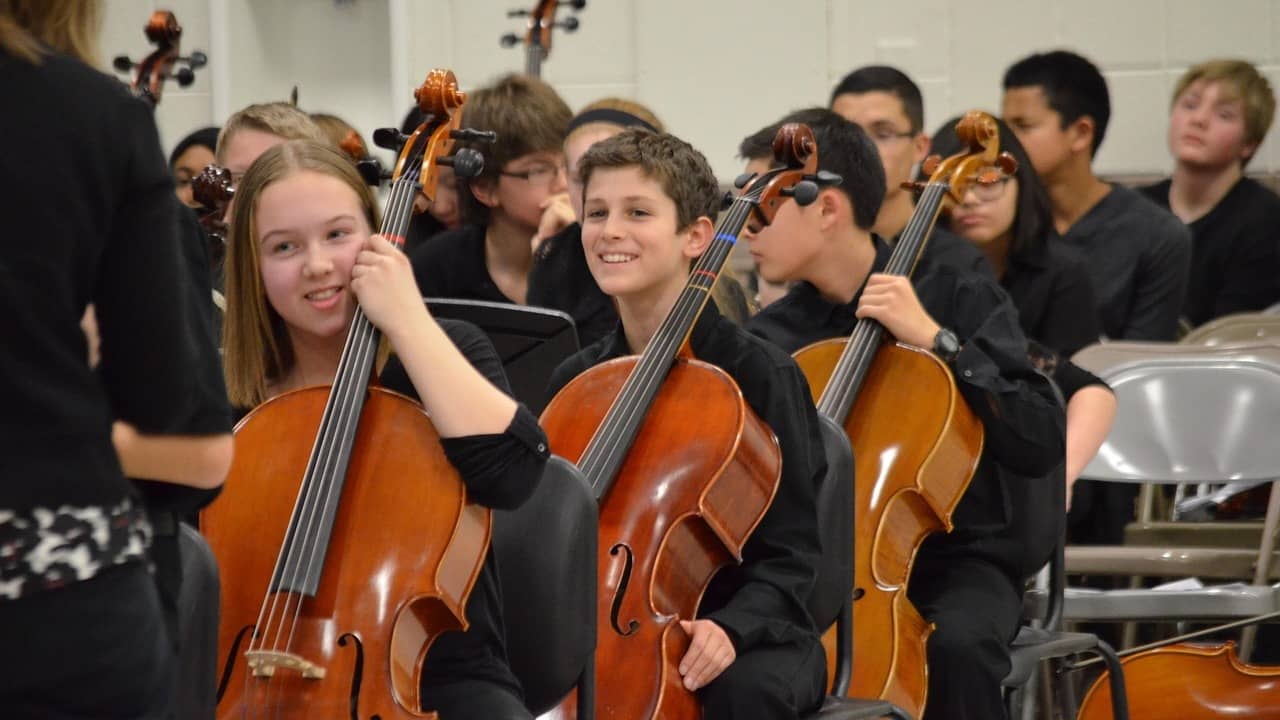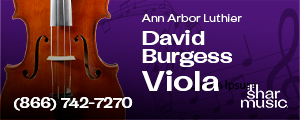Teaching the Stories Behind the Music
A high school student of mine recently came to her lesson, wanting a bit of help with new piece for school orchestra, an arrangement of Shostakovich's "Waltz No. 2."
"Wow, cool piece to be playing in orchestra!" I said. "Did your teacher tell you anything about Shostakovich?"
The student looked at me, blankly. I realized that I'd better fill in that blank.
So we launched into an interesting and engaging conversation about the Soviet composer Dimitri Shostakovich and his artfully rebellious works, many of them created in the face of a Communist regime that had placed a target on his back. Together we looked up "Waltz No. 2" - it was actually a somewhat later work, one of his most popular. It was written for film, and the melody line she was playing was originally written for saxophone - it was written to be a bit jazzy.
Suddenly my student (as well as the parent, sitting on the couch) had become a lot more interested in this music.
"How did you know these things?" the parent ask me as they were packing up to leave. "Did you take a special class?"
I laughed, "No, just life as a curious musician!"
After that conversation, my mind turned to a Facebook post made recently by teacher and electric violinist Matt Bell. He wrote, "If you are a band or orchestra teacher, please consider taking a couple minutes before starting a new piece of music and talking to your kids about that piece. When was it written? By whom? What were they trying to say (musically and otherwise)? Why did you pick this piece?"

It's good advice, and it applies not just to band and orchestra teachers, but to private music teachers - any teachers, actually. Even if you are teaching yourself.
Yes, there is so much to conquer in learning a piece of music: the notes, the bowings, the dynamics, the phrasing, articulations, vibrato, etc. But let's not forget the point: expression. Music holds history, emotion, culture. It is meant to mean something. Where did it come from? This gives us some helpful clues so that we can also involve our minds, imaginations and hearts in our music-making.
Context can revolve around history, genre, nationality, personal experience - so many things.
I'll give you a few examples. Here is a very basic one - when a beginning student reaches the Minuets at the end of Suzuki Book 1, I feel it's nice to inform them that a "Minuet" is a dance - and so is a Gavotte. How would it feel to dance to that?
This holds for the advanced student learning Bach solo Partitas - they are all dance movements.
"Meditation from Thais" is well, a meditation from "Thais," the opera by Massenet. It's a little interlude where the heroine renounces her wayward path and finds God.
I like telling students who are playing the Bach Bourree in Suzuki Book 3 that, firstly, it was written by Bach for cello. I like to have them then listen to the Soviet cellist Mstislav Rostropovich playing it and mention that Rostropovich took his cello outside and played it next to the Berlin Wall, as it was coming down. Then we listen to Pablo Casals - and I give tell them his famous quote from when he was in his 90s, that he played Bach every day because "I think I am making progress..."
As for personal context - well, be careful. When my college professor told me "I played the Bruch Concerto when I was six," I'm afraid that this instantly melted my motivation into a puddle at my feet. But I have loved hearing stories from teachers, mentors and conductors - a conductor meeting Bernstein, or a teacher's precious vintage picture of Joseph Joachim ("who wrote that cadenza you are learning....") or other personal stories offered in the spirit of "passing it on" and making the student (or younger musician) part of a cherished legacy.
There is a rich world of context for everything we play, if we look for it. And those of us who have been taking that special class, "Life as a Curious Musician," should remember to share it whenever the opportunity presents itself.
You might also like:
- Discussion: Great Mythical Violin Stories
- Who is Evah Pirazzi? Mystery solved!
- A Conversation with Violinist Itzhak Perlman
* * *
Enjoying Violinist.com? Click here to sign up for our free, bi-weekly email newsletter. And if you've already signed up, please invite your friends! Thank you.
Replies
I still recall my violin teacher telling me as I was learning the S&Ps to remember that these partitas were dance movements and to play them in that fashion.
I've played Shost waltz 2 in my string orchestra. I love it. The sax solo sounds fab on the 2nd violin's G string.
Only the partitas are dances and therefore not allowed in church, I believe.
Depends on the church, about the partitas. I asked a good friend to play the entire E Major partita as prelude music before my wedding, which was in a Baptist church of the progressive variety.
I enjoy giving students context - Shostakovich’s feelings about Stalin is certainly a big one, and when teaching students Gavotte (or a Minuet), I first ask if they know what a Gavotte is - they never do - and then explain that is a dance from George Washington’s time. Then I ask if they think it was danced by common people or the aristocracy - they always guess correctly - which leads to a discussion of style.
I have often commented to a student who is ready to take Gavotte or a Minuet up to tempo that they are playing a geriatric version (defining the word geriatric) and now it is time to play the dance for younger people. But as I am aging myself, I find this particular illustration to be losing its charm.
When I said church, I meant a church in Germany in 1700!
THe E Major Partita's prelude was also used in a couple of cantatas. #29 uses a very Handelian array of organ, trumpets, and drums. A great way to welcome people to a wedding, if you have money to spare.
As for the Shostakovich, one of the YouTube examples says
The Suite for Jazz Orchestra No. 2 is a suite by Dmitri Shostakovich. It was written in 1938 for the newly founded State Jazz Orchestra of Victor Knushevitsky, and was premiered on 28 November 1938 in Moscow (Moscow Radio) by the State Jazz Orchestra.
Mary Ellen-- I don't know if you've seen people dance baroque forms, but while their bodies might move with elegance there is often a lot of quick shifting of weight and shuffling of feet involved. Dotted rhythms must be gauged accordingly. George Washington was considered quite an exceptional athlete for being able to do that all night.
Mary Ellen, I find it funny that I've said variations of the same thing to students, when playing a minuet or gavotte! I also don't want to be "ageist" though, so a new take: "Your dancers are very, very tired, can we wake them up?"
Ohhh thanks, Laurie, I will start using your words.
Stephen, my main intent with that particular illustration is to get the student to play with more polish, by which I mean in tune, with correct rhythms, and a nice sound. And less bow!
Oh, might as well get that right first!
This article has been archived and is no longer accepting comments.
Violinist.com is made possible by...
International Violin Competition of Indianapolis
Dimitri Musafia, Master Maker of Violin and Viola Cases
Johnson String Instrument/Carriage House Violins
Subscribe
Laurie's Books
Discover the best of Violinist.com in these collections of editor Laurie Niles' exclusive interviews.

Violinist.com Interviews Volume 1, with introduction by Hilary Hahn

Violinist.com Interviews Volume 2, with introduction by Rachel Barton Pine










October 12, 2025 at 06:38 AM · Valuable advice! Thanks, Laurie.